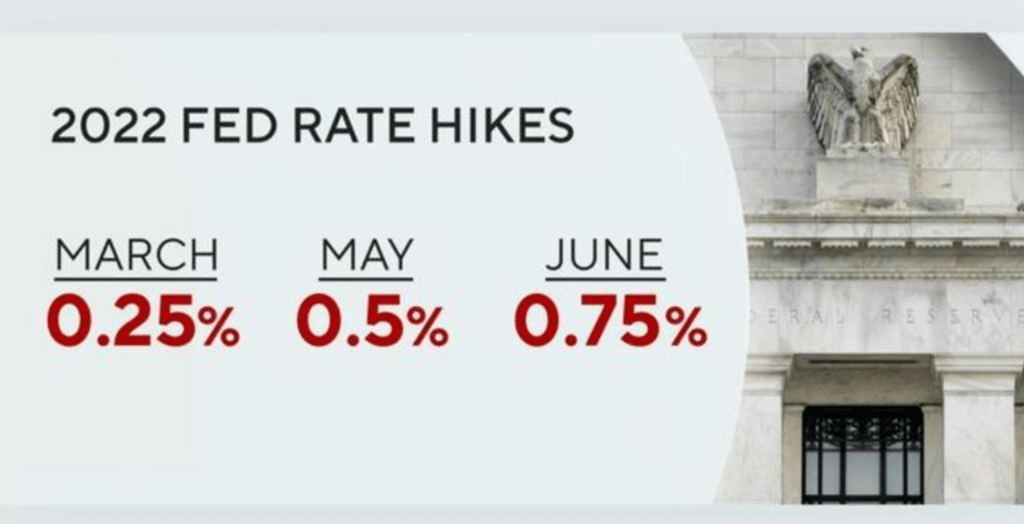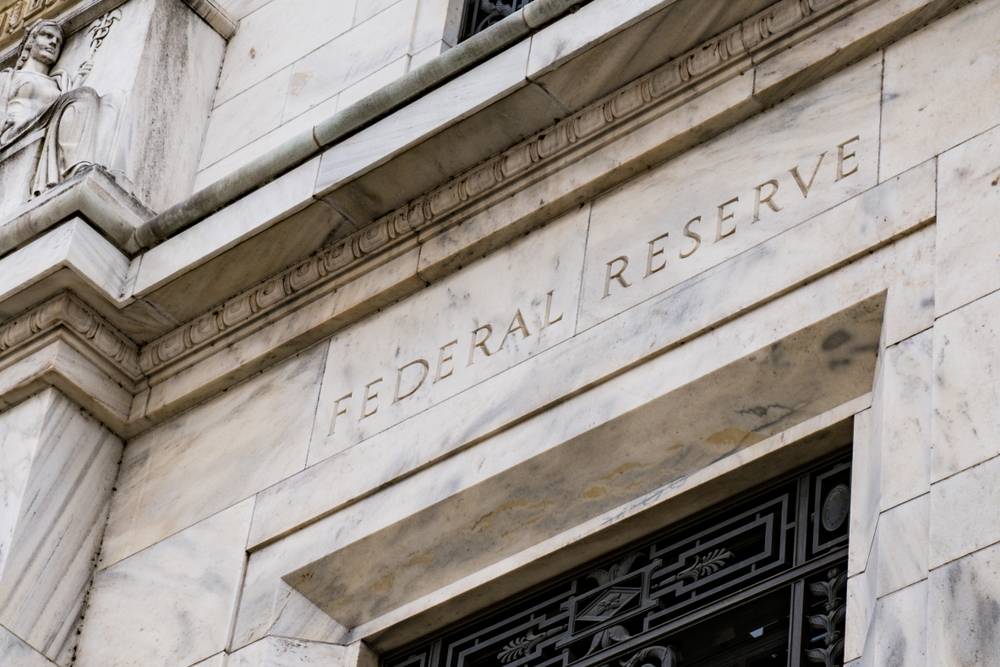
On Wednesday, the Federal Reserve raised the interest rate by 0.75%. This was the largest interest rate increase since 1994.
The decision by the Federal Reserve to raise the interest rate comes just days after the inflation measure showed consumer prices are rising faster than they have in more than 40 years.

The cost of gasoline climbed 4.1% in May and accounted for a big chunk of the increase last month in the cost of living.
Gas prices rose again in June and hit a record high. The website GasBuddy said the average price of a gallon of gas in the U.S. topped $5 for the first time ever.
Food prices leaped 1.2% last month. Grocery prices have shot up 12% in the past year in what’s the biggest increase since 1981.
Rents rose 0.6% in May.
“Overall economic activity appears to have picked up after edging down in the first quarter,” the policy-setting Federal Open Market Committee said in a statement, repeating its commitment to “ongoing increases.”

The Fed’s latest move lifts short-term borrowing costs and brings its new target to between 1.5% and 1.75% What this means is that Americans are about to face significantly higher interest rates on car loans, mortgages, and credit cards. Even more rate hikes are coming down the pike this year.
This news out of the Federal Reserve may raise alarm bells for those who plan on buying a new home, or vehicle, or have plans on paying off high-interest credit card debt; however, keeping the interest rate low indefinitely would cause a bigger disaster that will end up being more costly.
It would result in “a whole lot of cash bidding up prices over very few and scarce goods,” says Ken Johnson, an associate dean, and professor of finance at Florida Atlantic University. “If we kept interest rates low permanently, it would probably lead to hyperinflation unlike we have perhaps ever seen ever in the U.S.”
Hyperinflation is generally thought of as a period where the inflation rate goes up more than 50%.
The urgency to move faster coincided with Fed policymakers’ expectations that inflation will not abate as fast as they had expected in their March projections. The median Fed policymaker now expects prices to rise by 5.2%, as measured by personal consumption expenditures (PCE), over the course of 2022, a faster pace than the 4.3% it had forecasted in March.
“The invasion of Ukraine by Russia is causing tremendous human and economic hardship,” the central bank said in the announcement. “The invasion and related events are creating additional upward pressure on inflation and are weighing on global economic activity. In addition, COVID-related lockdowns in China are likely to exacerbate supply chain disruptions.”
Officials have also suggested that the unemployment rate could rise even more this year. They are now forecasting a 3.7% headline unemployment rate by the end of the year.
The federal funds rate is a key tool for cooling things off. Also known as the “target for the overnight rate,” it’s the interest rate banks charge each other for overnight loans so they can meet their requirements for cash on hand.
When banks pay more to borrow, they pass on those costs to their customers, reducing demand.
“Those things, as you drive down the rates, their value actually goes up,” Johnson says. “So if I’m holding a huge portfolio of houses — say I’m a landlord — and you keep rates artificially low, it’s just going to increase the value of all my properties.”
“You get this flow of wealth from low rates into the class that has a lot of financial wealth. It doesn’t get distributed evenly.”
